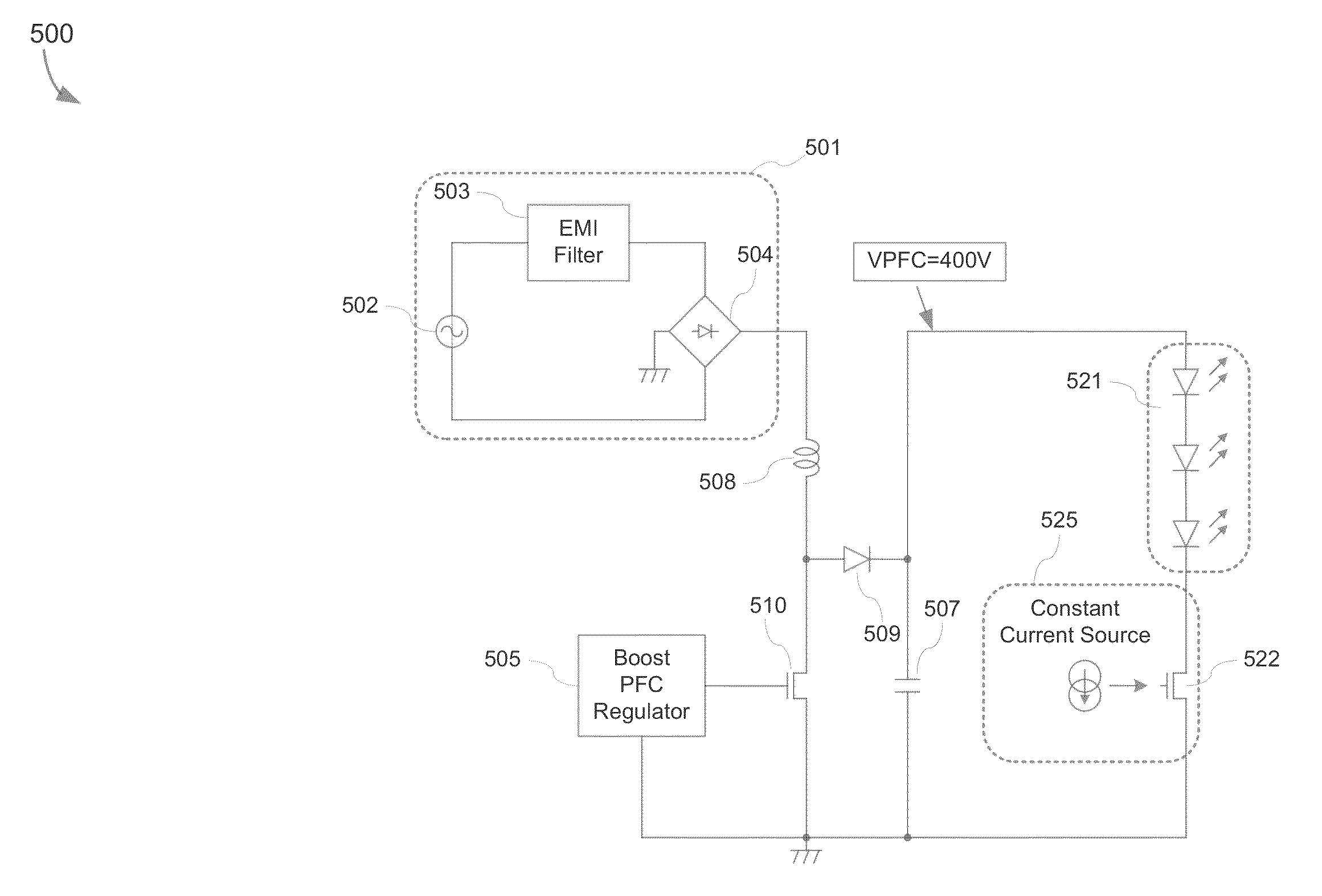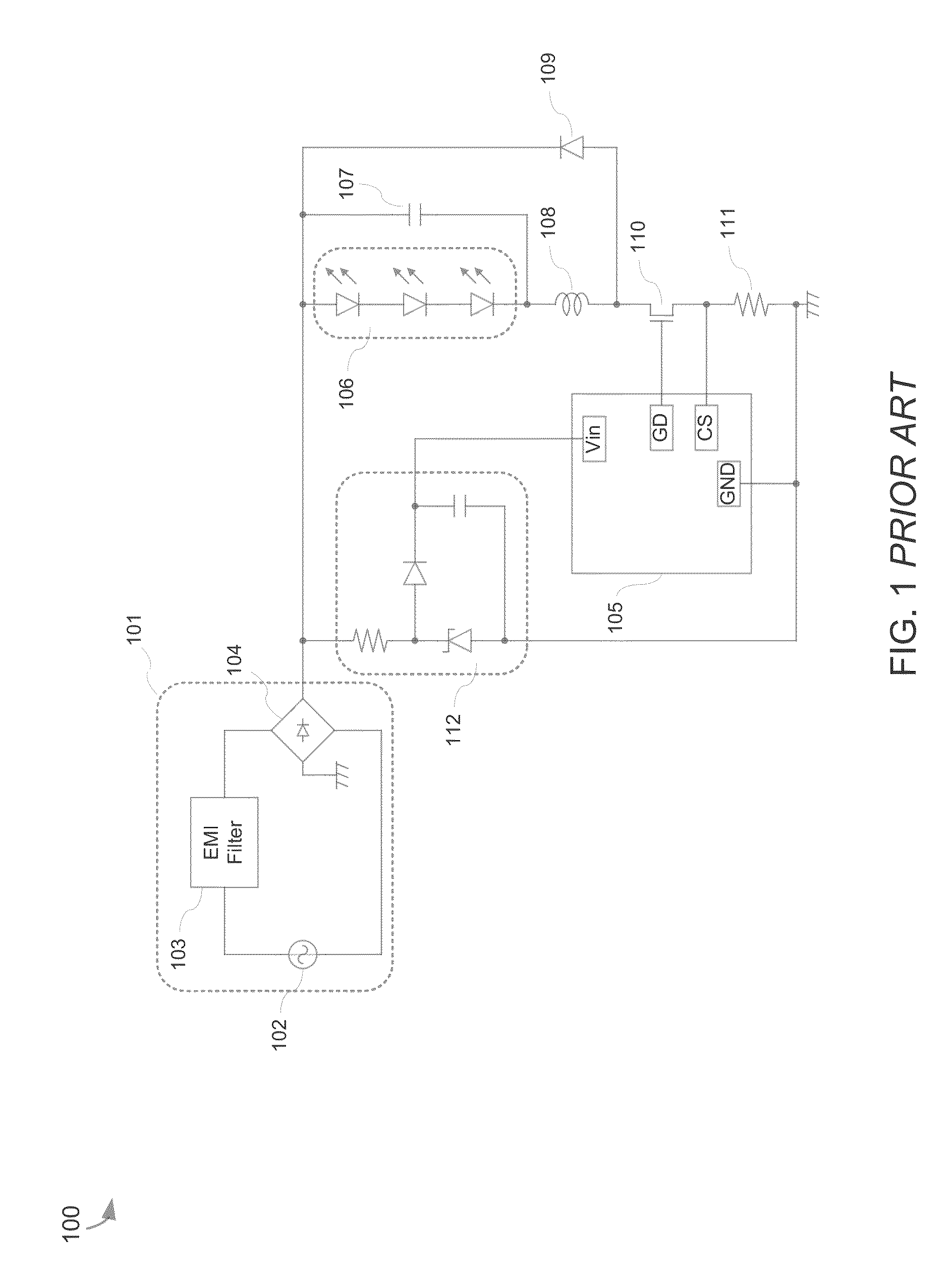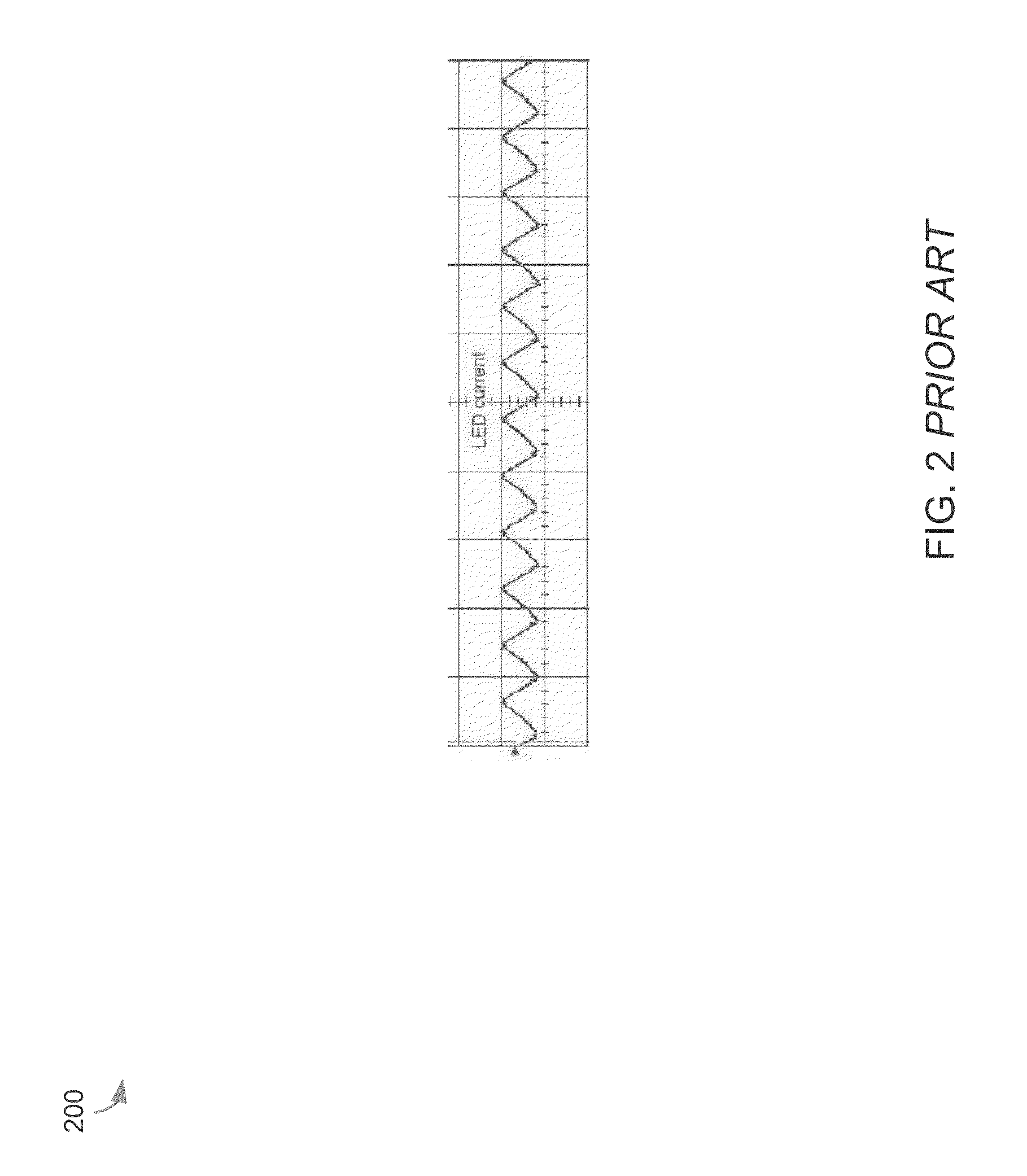Power factor correction converter with current regulated output
a technology of power factor correction and converter, which is applied in the direction of electric discharge tubes, discharge tubes/lamp details, basic electric elements, etc., can solve the problems of increased cost of led string connection, and increased cost of manufacturing led lighting devices. , to achieve the effect of shortening the duty cycl
- Summary
- Abstract
- Description
- Claims
- Application Information
AI Technical Summary
Benefits of technology
Problems solved by technology
Method used
Image
Examples
exemplary embodiment 500
[0089]FIG. 5 is an exemplary embodiment 500 of a power factor correction (PFC) converter in a boost configuration in accordance with the present invention. The exemplary embodiment 500 may comprise a set-up circuit 501, a boost PFC regulator 505, a coil 508, a transistor 510, a diode 509, a capacitor 507, an LED string comprising a plurality of LEDs connected in series and a constant current source 525. The set-up circuit may further comprise an AC source, an electromagnetic interference (EMI) filter and a diode bridge 504. A high DC level of 400v, i.e., VPFC level is outputted to the anode of the LED string. However, as each LED has approximate 3v voltage drop at a room temperature, the exemplary embodiment 500 requires a large number of LEDs to be used in order to achieve high efficiency. Fewer diodes used in the LED string would lead to extra voltage drop across the constant current source which means less efficiency.
[0090]FIG. 6 is an exemplary embodiment of a power factor corre...
exemplary embodiment 600
[0092]FIG. 7 is an exemplary embodiment of a power factor correction (PFC) converter in a boost configuration followed by a buck regulator as illustrated in exemplary embodiment 600 with detailed configuration of a boost PFC regulator, a buck regulator and a low-side connected load in accordance with the present invention. In the exemplary embodiments 700, the boost PFC regulator 705 may further comprise a first pair of resistor dividers 741, a second pair of resistor dividers 742, a first reference voltage 745 corresponding to the first level voltage v1 at the output of a first diode 709, a first error amplifier (EA) 746, a multiplier 747, a first oscillator 744 and a first pulse width modulation (PWM) comparator 748. An AC voltage from the set-up circuit 701 may be inputted to the boost PFC regulator 705 via the first pair of resistor dividers 741. The divided voltage may be applied to the multiplier 747 as one input. The first EA 746 may receive the first level voltage v1 via the...
exemplary embodiment 800
[0096]In any one of the exemplary embodiment 700 and the exemplary embodiment 800, when the first transistor 710 is on, the first coil 708 accumulates received current, and when the first transistor 710 is off, the first coil 708 transmits accumulated current and outputs the first level voltage v1 to the buck converter 711 via the first diode 709. Such first level voltage v1 is about 400v in order to cover the Universal AC line input range, and therefore achieve a high PFC by allowing AC current to follow the AC line envelope.
[0097]In any one of the exemplary embodiment 700 and the exemplary embodiment 800, the boost PFC regulator 705 may be configured to achieve a high power factor correction level by regulating the first time pattern of the on / off status of the first transistor 710 in order to force the AC current to follow the AC voltage to achieve a high PFC level. The high power factor correction level that can be achieved is approximately equal to 0.96 or is greater than 0.96,...
PUM
 Login to View More
Login to View More Abstract
Description
Claims
Application Information
 Login to View More
Login to View More - R&D
- Intellectual Property
- Life Sciences
- Materials
- Tech Scout
- Unparalleled Data Quality
- Higher Quality Content
- 60% Fewer Hallucinations
Browse by: Latest US Patents, China's latest patents, Technical Efficacy Thesaurus, Application Domain, Technology Topic, Popular Technical Reports.
© 2025 PatSnap. All rights reserved.Legal|Privacy policy|Modern Slavery Act Transparency Statement|Sitemap|About US| Contact US: help@patsnap.com



